The Gender Decoder calculates the proportion of feminine-coded and masculine-coded words in job advertisements. Research has found that masculine- coded language in job postings can deter women job seekers from applying. This free tool can help HR professionals, recruiters, or managers who want to appeal to applicants of all gender identities. For more information on the tool and it’s creation, please refer to the FAQ page.
The document outlines the six principles of Opportunity Employment, which prioritizes equity, inclusion, and opportunity, and mobility within a company while generating business value. The principles are associated with the various stages of Opportunity Employment: strategy and set up, recruiting and hiring, retention and advancement. HR professionals, managers and organization leaders, and practitioners can all benefit from this resource.
This guide for employers provides guidance for the intentional inclusion of transgender workers, from recruitment and hiring to fostering a supportive culture. This resource can be used by organizations to learn about and evaluate their internal practices or practitioners looking to involve partners in working toward transgender inclusion.
Even before the pandemic and associated economic fallout, one in four working adults in the US earned a wage insufficient to lift a small family out of poverty. This conversation is about how quietly courageous leaders in city government, policy advocacy, and workforce development are innovating to improve the quality of jobs in their communities. This webinar draws from experiences of leaders who contributed to our Job Quality Tools Library, a compendium of tools and resources curated from a range of organizations to share ideas about opportunities to improve job quality. The webinar also includes tips about how to use the Library and responds to as many of your questions as time allowed.
Even before the pandemic, in an allegedly strong economy, workers at the bottom end of the opportunity scale were struggling to support themselves and their families. No single metric is more striking in this respect than the divisions in wealth between men and women, and between white households and households of color. White households have roughly 10 times the wealth of Black households. Households headed by single women have less than 40% of the wealth of those headed by single men. Broadening opportunities to participate in the ownership of business assets can help address this wealth divide and offer working people the opportunity to meaningfully participate in the success of our economy.
This discussion includes perspectives from research, business, policy, and worker-owners.
This report includes 23 practices to embed racial equity into your organization by developing, recognizing, and promoting frontline employees of color. Employers and practitioners can use this resource to structure and implement equitable policies for advancement to strengthen their business.
Building a race equity culture can support organizations’ capacity to reduce racial disparities within their organizations and through their external strategies. This resource is designed to support practitioners to strengthen internal organizational culture as it relates to race equity. This publication can support a range of organizations to prioritize racial equity, embed equitable practices, and monitor outcomes.
Before the pandemic, food and drinking establishments were an important part of the business fabric in communities across the country, and these businesses employed over 12 million people. But as food businesses lost customers during the crisis, millions of restaurant workers lost work. Food and drinking establishments have been an important source of employment for women and people of color, who are over-represented in the industry’s lower paid occupations.
In this conversation we talk about ideas for business practices, public policies, and partnerships, including an innovative public/private effort that’s addressing the interests that workers, small business owners, and communities all share in a thriving restaurant sector.
Lack of access to quality jobs is a key contributor to rising inequality. Race, gender, and place all play a critical role in who has access to quality work and economic mobility. How can leaders across fields take concrete steps to assess and address disparities in job quality in a regional labor market and improve outcomes for all workers? This event explores the following questions: Why prioritize and measure job quality in your work? What data sources, tools, and approaches can you put to work immediately to assess job quality in your local labor market? How can you disaggregate data by race, gender, and place, and analyze disparities in job quality in a region?
This report identifies 12 evidence-based practices companies can use to help break down barriers women face in the workplace while simultaneously creating a competitive business advantage. This resource has applications for employers and the practitioners who work with them to create and implement policies that support a workplace that is gender inclusive.
